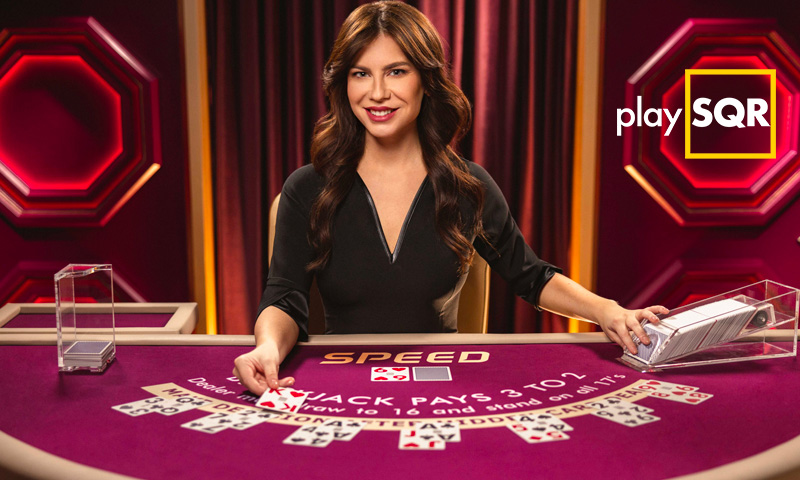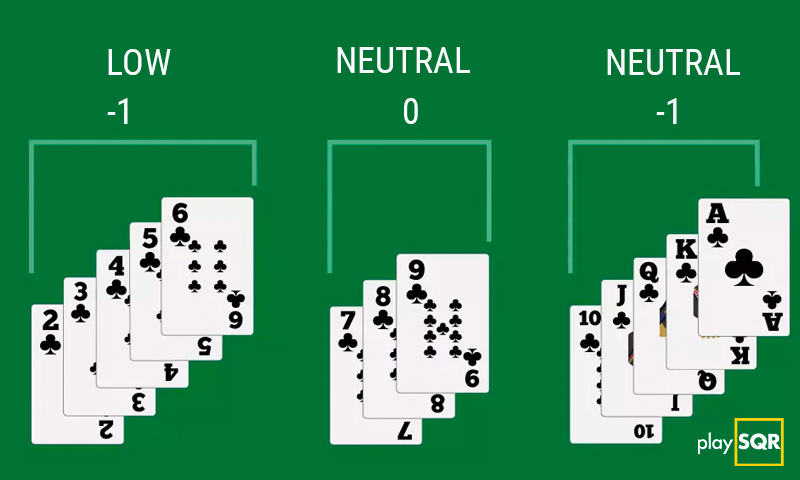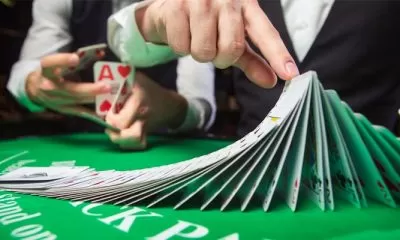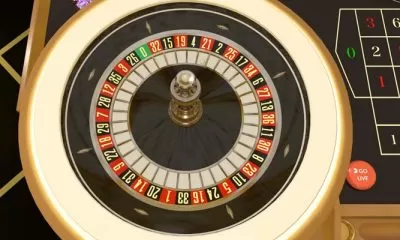Casino
7 Techniques for Card Counting in a Blackjack Casino
Published
7 months agoon
By
Sam Jonson
Blackjack is a casino card game where players aim to beat the dealer’s hand without exceeding 21 points. Each player is dealt two cards and can choose to “hit” for additional cards or “stand” to keep their current total.
Face cards are worth 10 points, numbered cards match their face value, and aces can be worth 1 or 11 points. The game combines skill and luck, with the objective being to reach 21 points or have a higher hand than the dealer without going over.
Do blackjack betting strategies work?
Betting strategies can provide structure and help manage your bankroll in blackjack. However, they don’t alter the core odds of the game. It’s essential to use them cautiously, understand their limitations, and prioritize responsible gambling practices. The most critical factor in successful blackjack play is mastering basic strategy and card counting, if applicable, as these directly influence your odds of winning.
Card counting techniques
If you are thinking about how to count cards in blackjack, then continue reading the article.
Counting cards in blackjack is a strategic technique often used by skilled players to gain an advantage over the casino. The primary aim is to keep track of the ratio of high to low-value cards remaining in the deck or shoe, which informs players when to bet more or less. The various methods of counting cards are listed below.
1. Hi-Lo system
The Hi-Lo system assigns a point value to each card.
- High cards (10s, face cards, and aces) are valued at -1
- Low cards (2-6) are valued at +1
- Neutral cards (7-9) have no value.
Players start with a count of 0 and add/subtract values as cards are dealt. A high positive count indicates a deck favorable for players.
2. Hi-Opt systems
Variations of the Hi-Lo system, like Hi-Opt I and Hi-Opt II, use more complex point values for cards. These systems provide a more accurate representation of the deck composition but require more mental calculation.
3. KO system (Knock-out)
Similar to the Hi-Lo system, the KO system assigns +1 to low cards and -1 to high cards. However, it does not adjust for the number of decks in play, making it simpler for beginners.
4. Zen count
The Zen Count incorporates fractions into card values to provide a more precise count. It assigns +2, +1, 0, -1, and -2 values to different cards. This system requires more concentration but offers improved accuracy.
5. Omega II system
Omega II uses a broader range of card values, making it more intricate. Players must assign values of +2, +1, 0, -1, and -2, and fractions like 1/2 and -1/2 to cards.
6. Wonging
Some players use Wonging, a strategy where they observe the game without playing until the count becomes favorable, then jump in with higher bets. This avoids playing in unfavorable conditions.
7. Team play
In team play, a group of card counters works together. Some players count cards and signal others when the deck becomes favorable, allowing a member to join the game and place large bets.
Blackjack players should also be aware that card counting is not foolproof, and fluctuations in luck can still affect outcomes. While card counting is illegal in many casinos, in online blackjack games, card counting is not possible. Besides counting cards techniques, employing some key strategies and tips like the ones mentioned below can help raise the winning chances in the blackjack game.
How to master betting in blackjack?
Mastering betting meaning in blackjack – A nuanced skill that combines strategy, discipline, and an understanding of odds.
1. Blackjack table selection
Choose the ideal table for gameplay. Look for blackjack games with favorable rules, such as a lower number of decks, games with 3:2 payouts on blackjack, dealer standing on soft 17, and the ability to double down after splitting. Tables with favorable rules and lower house edges can be great choices.
2. Blackjack basic strategy
Learn and memorize basic strategy. This is a set of rules that can guide your decisions based on your hand and the dealer’s up card. Following a basic strategy reduces the casino’s edge to the minimum.
3. Managing bankroll
Start by establishing a dedicated blackjack bankroll. This is the amount you’re willing to risk in a session. Never bet more than you are ready to lose. A common rule is to have at least 50 times your minimum bet.
4. Bet sizing
Your bet size should be a small, predetermined percentage of your bankroll. A typical guideline is 1-2% of your total bankroll per bet. Adjust your bet size based on your bankroll’s size, but avoid sudden, drastic changes.
5. Unit betting
Utilize unit betting, where one unit represents your base bet. Keep unit sizes consistent throughout your session. For instance, if your base bet is $10, each unit is $10.
6. Progressive betting
Avoid systems like the Martingale, which involve doubling bets after losses. They can lead to significant losses in the long run. Stick to flat betting or, if counting cards, variable but calculated bet increases.
7. Insurance
Avoid taking insurance bets. This is generally not a profitable move over the long term, as the odds are not in your favor. They rarely pay off statistically and increase the house edge.
8. Doubling down
Understand when to double down. In general, it’s advantageous to double down when you have a total of 10 or 11, and the dealer’s up card is weak (2-6).
9. Splitting pairs
Split pairs of 8s and aces, and avoid splitting 10s. Splitting 8s gives you a chance to improve two weak hands, while splitting aces increases your chances of getting a blackjack.
10. Soft hands
Be aware of how to play soft hands (hands with an ace that can be counted as 11). Usually, you should be more aggressive with soft hands, as they give you flexibility.
11. Hard hands
For hard hands (hands without an ace), consider the dealer’s upcard and follow basic strategy. Avoid hitting a hard 17 or higher.
12. Be mindful
Maintain emotional control and avoid making impulsive decisions based on frustration or excitement. Keep emotions in check. Don’t chase losses by increasing bets impulsively. Stick to your strategy, and walk away when you’ve reached your session or loss limit.
13. Practice
Practice your blackjack skills online or with friends to improve your understanding of the game and your ability to make quick decisions. Stay updated on rule variations and betting strategies.
14. Record keeping
Maintain a betting journal to track wins, losses, and your betting decisions. Analyze your performance to identify areas for improvement.
15. Risk management
Understand that blackjack is still a game of chance. Even with a perfect strategy, there will be losing sessions. Be prepared for variance, and don’t jeopardize your bankroll on a single bet or session.
The above strategies can help improve your odds in blackjack; however, it’s still a game of chance, and there are no guarantees of winning. We must also mention that most of the operators both online and offline casinos will have strict policy against card counting. They consider this practice as unlawful and a form of cheating. While not illegal, given that it doesn’t involve any criminal activity, card counting is banned in most casinos because it reduces the edge the house has over players in the normal course of play and negatively impacts the margins casinos earn from blackjack.
Mastering betting in blackjack is an ongoing process that combines mathematical strategy, discipline, and experience. Consistency and a solid understanding of odds and bankroll management are essential to master bets and long-term success. The key is to play smart, make informed decisions, and enjoy the game responsibly!
You may like
-
High Low Game: How and Why to Play, Variations, and Strategies
-
Live Speed Baccarat: Game Rules, How to Play, and Strategies
-
A Comprehensive Guide to Play Poker Online with Friends
-
How to Play Roulette: Everything You Need to Know about Casino Roulette Game
-
Play Online Roulette Successfully: 6 Proven Strategies to Help You Win
-
Blackjack Casinos: How to Play and Win, Live Dealer Games













